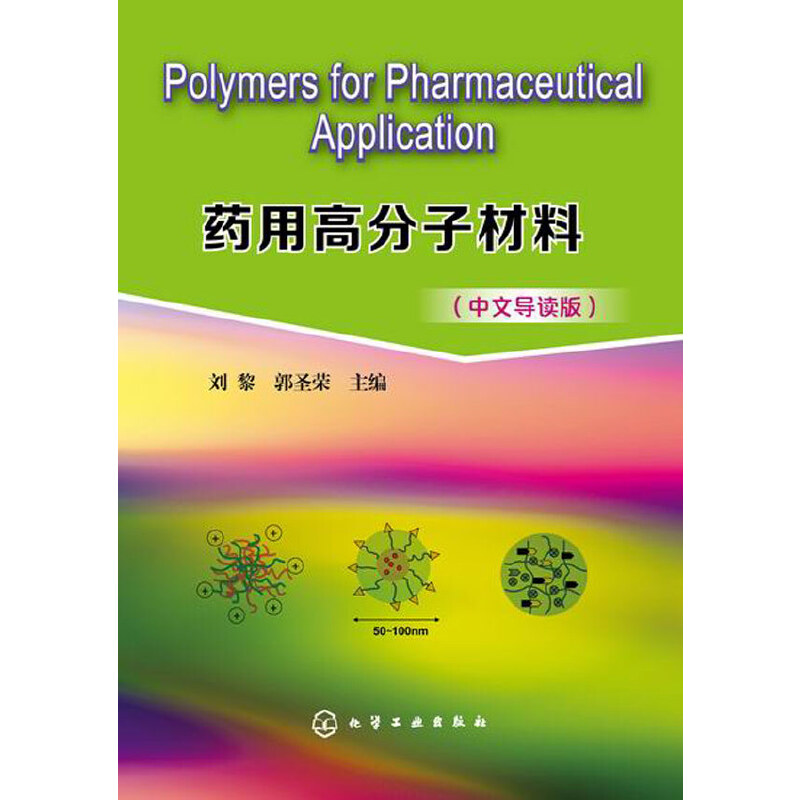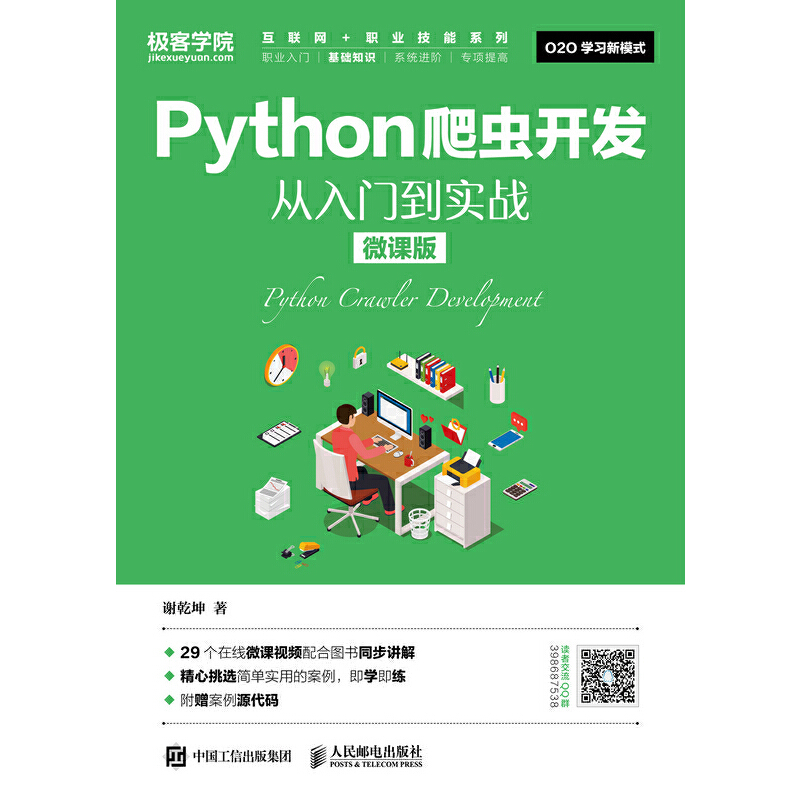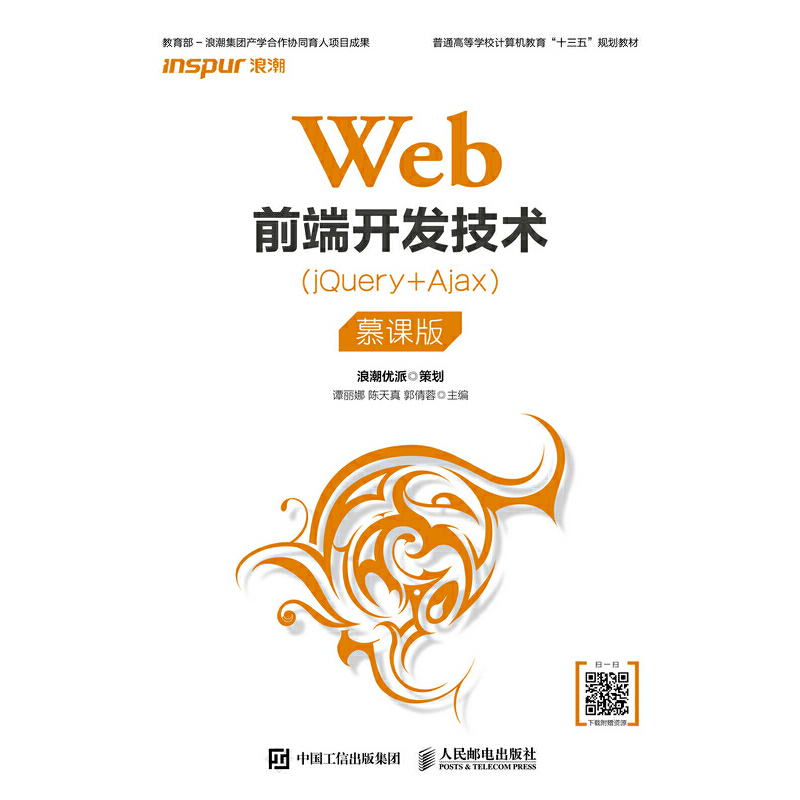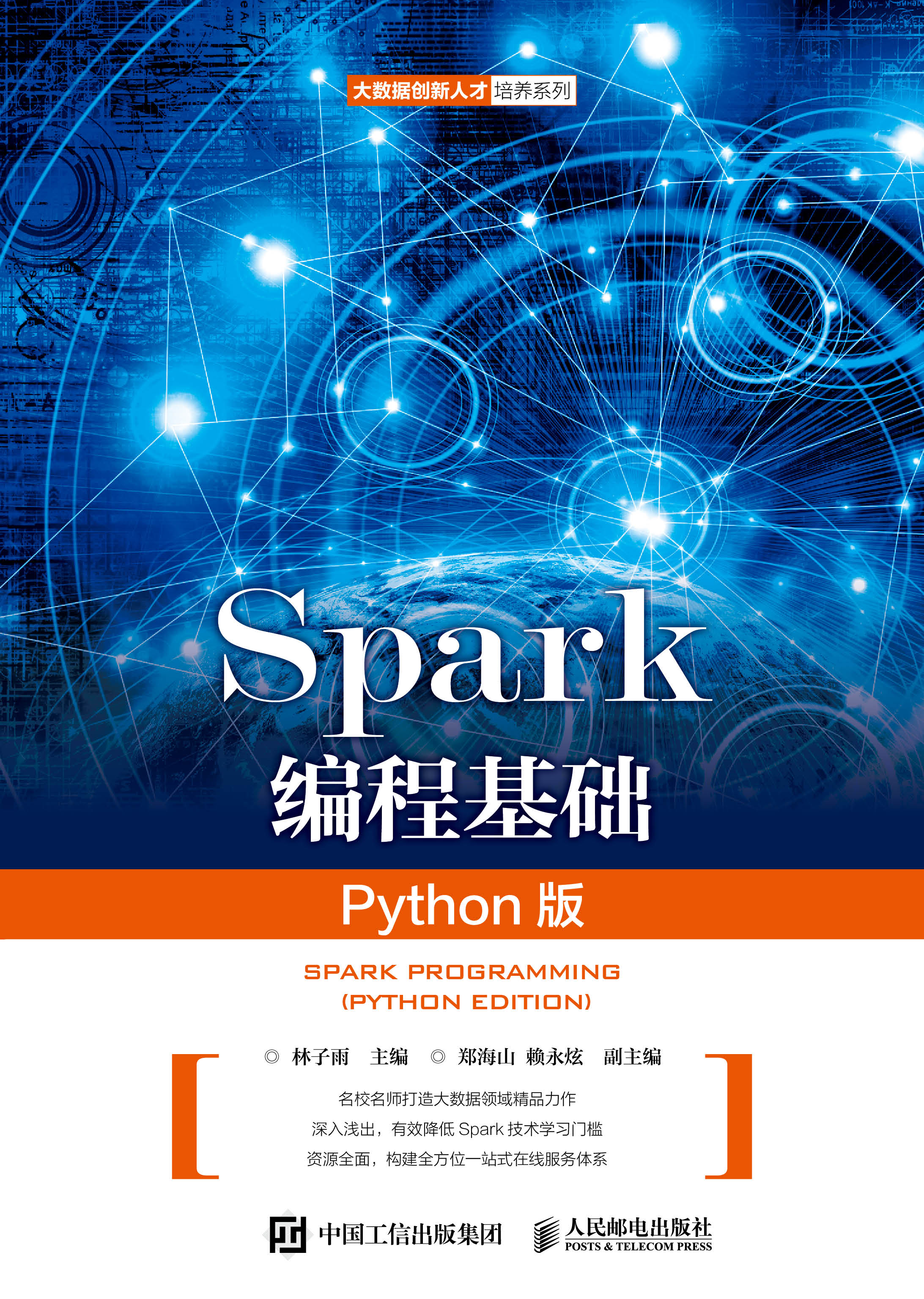Polymers for Pharmaceutical Application——药用高分子材料(中文导读)
定价:¥49.00
作者: 刘黎
出版时间:2015-01
出版社:化学工业出版社
- 化学工业出版社
- 9787122218131
- 01
- 236010
- B5
- 2015-01
- 209
- 166
- ①R9②TB324
- 教材综合
作者简介
内容简介
本教材是编者总结近十年的教学经验,从大量英文原版文献和书籍中选取适合教学大纲要求的内容编写而成,并对关键知识点配以中文导读,便于学生阅读和理解。全书共分6章,主要内容如下:第一章为药用辅料概述;第二章为高分子材料简介;第三章、第四章分别介绍选材于《Handbook of Pharmaceutical Excipients》(Fourth Edition,edited by Raymond C Rowe,Paul J Sheskey and Paul J Weller)中的天然高分子辅料和合成高分子辅料;第五章介绍现代药物输送系统研发中涉及的生物可降解高分子材料;第六章介绍几类新型的高分子药物输送体系,包括:自组装高分子和纳米制剂、药用水凝胶、高分子-药物轭合物、高分子基因载体。
目录
Chapter 1. Introduction to Pharmaceutical Excipients
药用辅料概述 1
1.1 Definition of pharmaceutical excipients 1
1.2 What are excipients doing in medicines? 2
1.3 Quality and safty of excipients 3
1.4 Relationship between polymers and pharmaceutical excipients 5
1.5 Specific notes for polymers used in drug delivery system 6
本章中文导读 7
References 9
Chapter 2. Introduction to Polymers
高分子材料概述 10
2.1 What are polymers? 10
2.2 Polymer structure and morphology 11
2.2.1 Molecular weight 11
2.2.2 Configuration and conformation 12
2.2.3 Chain structure 14
2.2.4 Crystalline 15
2.3 Synthesis 17
2.3.1 Addition polymerization 17
2.3.2 Condensation polymerization 19
2.3.3 Cross-linking reaction 19
2.4 Characteristic properties of polymers 20
2.4.1 Thermal properties 20
2.4.2 Mechanical properties 22
2.4.3 Viscoelastic properties 23
2.5 Characterization techniques 23
2.5.1 Determination of molecular weight 23
2.5.2 Determination of structure 24
2.5.3 Differential scanning calorimetry 25
2.6 Fabrication and processing 26
2.6.1 Injection molding 27
2.6.2 Extrusion 27
2.6.3 Spinning 27
本章中文导读 28
References 32
Chapter 3. Natural Polymers as Pharmaceutical Excipients
天然来源的药用高分子辅料 33
3.1 Starch and its derivates 33
3.1.1 Starch 33
3.1.2 Pregelatinized starch 36
3.1.3 Dextrin 37
3.1.4 Cyclodextrin 39
3.1.5 Sodium carboxymethyl starch 42
本节中文导读 44
3.2 Cellulose and its derivates 46
3.2.1 Microcrystalline cellulose 46
3.2.2 Powdered cellulose 47
3.2.3 Methylcellulose 48
3.2.4 Ethylcellulose 50
3.2.5 Hydroxyethyl cellulose 52
3.2.6 Hydroxypropyl cellulose 54
3.2.7 Hydroxypropyl methylcellulose 56
3.2.8 Carboxymethylcellulose sodium 59
3.2.9 Carboxymethylcellulose calcium 60
3.2.10 Cellulose acetate phthalate 61
本节中文导读 63
3.3 Other natural polymers in pharmaceutics 66
3.3.1 Chitin/chitosan 66
3.3.2 Alginate and sodium/calcium alginate 68
3.3.3 Acacia 71
3.3.4 Xanthan gum 72
3.3.5 Gelatin 74
3.3.6 Albumin 76
本节中文导读 78
References 80
Chapter 4. Synthetic Polymers as Pharmaceutical Excipients
合成的药用高分子敷料 81
4.1 Polymers based on polyvinyl 81
4.1.1 Polyvinyl alcohol 81
4.1.2 Polymethacrylates 83
4.1.3 Polyvinylpyrrolidone (Povidone) 87
4.1.4 Crospovidone 89
4.1.5 Carbomer 90
本节中文导读 93
4.2 Polymers based on polyether 95
4.2.1 Polyethylene glycol 95
4.2.2 Poloxamer 99
4.2.3 Polysorbates 102
本节中文导读 105
References 106
Chapter 5. Novel Synthetic Biodegradable Polymers as Drug
Delivery Carrier
新型可生物降解的合成药用高分子材料 107
5.1 Introduction 107
5.2 Polymers based on polyester 108
5.2.1 Poly(lactic acid) and poly(lactic-co-glycolic acid) copolymers 108
5.2.2 Polycaprolactone 111
5.2.3 Poly(β-hydroxybutyrate) 112
5.3 Other biodegradable polymers 113
5.3.1 Poly(orthoesters) 113
5.3.2 Poly(phosphate esters) 115
5.3.3 Polyanhydrides 116
5.3.4 Poly(amino acids) 117
5.3.5 Polyphosphazenes 119
本章中文导读 121
References 124
Chapter 6. Advanced Applications of Functional Polymer in Drug Delivery
功能高分子材料在药物输送中的应用进展 125
6.1 Hydrogels for pharmaceutical application 125
6.1.1 Introduction 125
6.1.2 Preparation of hydrogels 126
6.1.3 Properties of hydrogels 127
6.1.4 Pharmaceutical applications of hydrogels 129
本节中文导读 133
6.2 Polymer-based nanomedicine and self-assemblying polymers 134
6.2.1 Introduction to nanomedicine 134
6.2.2 Micellation of self-assemblying polymers 134
6.2.3 Biological significance of polymeric micelles 136
6.2.4 Drug release from polymeric micelles 137
6.2.5 Examples of polymeric micelles for drug delivery 138
本节中文导读 141
6.3 Polymer-drug conjugates 142
6.3.1 Introduction 142
6.3.2 Design and development of polymer-drug conjugates 144
6.3.3 Examples for polymer-drug conjugates 146
本节中文导读 152
6.4 Polymers for gene delivery 153
6.4.1 Introduction to gene delivery 153
6.4.2 Polymeric vectors 154
本节中文导读 161
References 162
药用辅料概述 1
1.1 Definition of pharmaceutical excipients 1
1.2 What are excipients doing in medicines? 2
1.3 Quality and safty of excipients 3
1.4 Relationship between polymers and pharmaceutical excipients 5
1.5 Specific notes for polymers used in drug delivery system 6
本章中文导读 7
References 9
Chapter 2. Introduction to Polymers
高分子材料概述 10
2.1 What are polymers? 10
2.2 Polymer structure and morphology 11
2.2.1 Molecular weight 11
2.2.2 Configuration and conformation 12
2.2.3 Chain structure 14
2.2.4 Crystalline 15
2.3 Synthesis 17
2.3.1 Addition polymerization 17
2.3.2 Condensation polymerization 19
2.3.3 Cross-linking reaction 19
2.4 Characteristic properties of polymers 20
2.4.1 Thermal properties 20
2.4.2 Mechanical properties 22
2.4.3 Viscoelastic properties 23
2.5 Characterization techniques 23
2.5.1 Determination of molecular weight 23
2.5.2 Determination of structure 24
2.5.3 Differential scanning calorimetry 25
2.6 Fabrication and processing 26
2.6.1 Injection molding 27
2.6.2 Extrusion 27
2.6.3 Spinning 27
本章中文导读 28
References 32
Chapter 3. Natural Polymers as Pharmaceutical Excipients
天然来源的药用高分子辅料 33
3.1 Starch and its derivates 33
3.1.1 Starch 33
3.1.2 Pregelatinized starch 36
3.1.3 Dextrin 37
3.1.4 Cyclodextrin 39
3.1.5 Sodium carboxymethyl starch 42
本节中文导读 44
3.2 Cellulose and its derivates 46
3.2.1 Microcrystalline cellulose 46
3.2.2 Powdered cellulose 47
3.2.3 Methylcellulose 48
3.2.4 Ethylcellulose 50
3.2.5 Hydroxyethyl cellulose 52
3.2.6 Hydroxypropyl cellulose 54
3.2.7 Hydroxypropyl methylcellulose 56
3.2.8 Carboxymethylcellulose sodium 59
3.2.9 Carboxymethylcellulose calcium 60
3.2.10 Cellulose acetate phthalate 61
本节中文导读 63
3.3 Other natural polymers in pharmaceutics 66
3.3.1 Chitin/chitosan 66
3.3.2 Alginate and sodium/calcium alginate 68
3.3.3 Acacia 71
3.3.4 Xanthan gum 72
3.3.5 Gelatin 74
3.3.6 Albumin 76
本节中文导读 78
References 80
Chapter 4. Synthetic Polymers as Pharmaceutical Excipients
合成的药用高分子敷料 81
4.1 Polymers based on polyvinyl 81
4.1.1 Polyvinyl alcohol 81
4.1.2 Polymethacrylates 83
4.1.3 Polyvinylpyrrolidone (Povidone) 87
4.1.4 Crospovidone 89
4.1.5 Carbomer 90
本节中文导读 93
4.2 Polymers based on polyether 95
4.2.1 Polyethylene glycol 95
4.2.2 Poloxamer 99
4.2.3 Polysorbates 102
本节中文导读 105
References 106
Chapter 5. Novel Synthetic Biodegradable Polymers as Drug
Delivery Carrier
新型可生物降解的合成药用高分子材料 107
5.1 Introduction 107
5.2 Polymers based on polyester 108
5.2.1 Poly(lactic acid) and poly(lactic-co-glycolic acid) copolymers 108
5.2.2 Polycaprolactone 111
5.2.3 Poly(β-hydroxybutyrate) 112
5.3 Other biodegradable polymers 113
5.3.1 Poly(orthoesters) 113
5.3.2 Poly(phosphate esters) 115
5.3.3 Polyanhydrides 116
5.3.4 Poly(amino acids) 117
5.3.5 Polyphosphazenes 119
本章中文导读 121
References 124
Chapter 6. Advanced Applications of Functional Polymer in Drug Delivery
功能高分子材料在药物输送中的应用进展 125
6.1 Hydrogels for pharmaceutical application 125
6.1.1 Introduction 125
6.1.2 Preparation of hydrogels 126
6.1.3 Properties of hydrogels 127
6.1.4 Pharmaceutical applications of hydrogels 129
本节中文导读 133
6.2 Polymer-based nanomedicine and self-assemblying polymers 134
6.2.1 Introduction to nanomedicine 134
6.2.2 Micellation of self-assemblying polymers 134
6.2.3 Biological significance of polymeric micelles 136
6.2.4 Drug release from polymeric micelles 137
6.2.5 Examples of polymeric micelles for drug delivery 138
本节中文导读 141
6.3 Polymer-drug conjugates 142
6.3.1 Introduction 142
6.3.2 Design and development of polymer-drug conjugates 144
6.3.3 Examples for polymer-drug conjugates 146
本节中文导读 152
6.4 Polymers for gene delivery 153
6.4.1 Introduction to gene delivery 153
6.4.2 Polymeric vectors 154
本节中文导读 161
References 162









